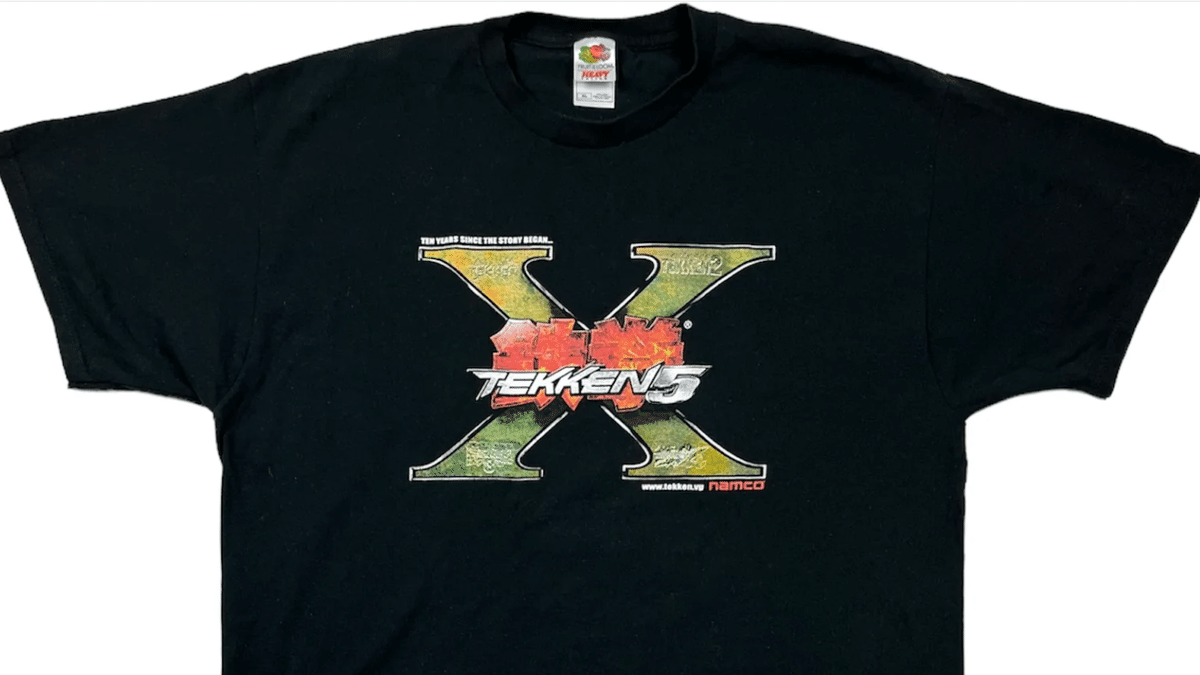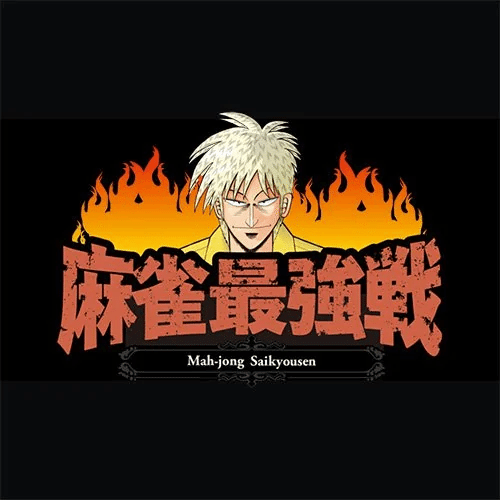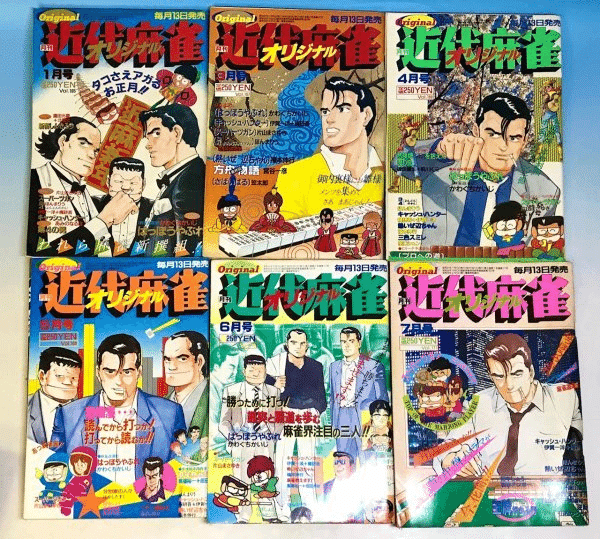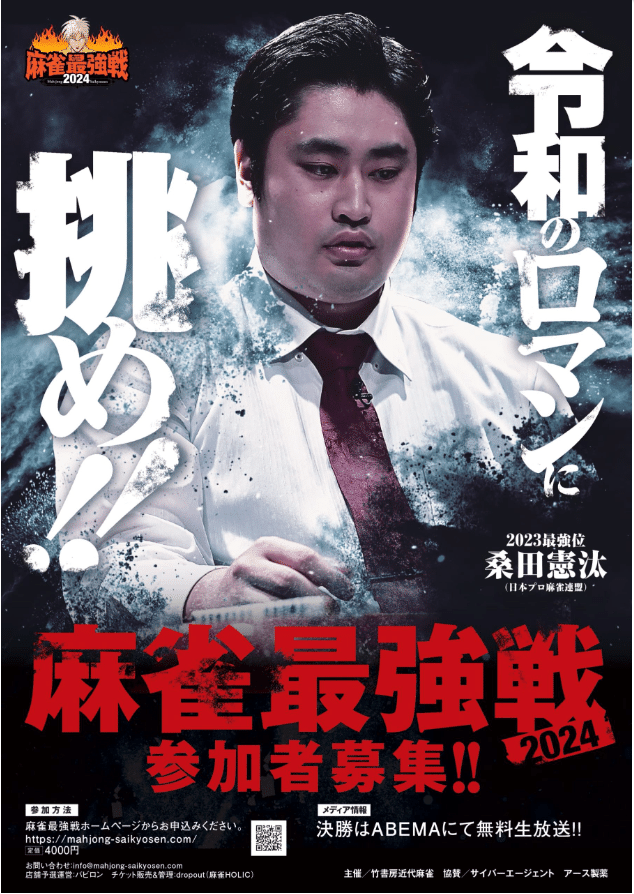
麻雀の闘劇:麻雀最強戦|The Super Battle Opera for Mahjong: Mahjong Saikyosen
Good afternoon! I hope that you're all doing well. I'm currently just kicking it in bed with my wife and we're watching "Big Trouble In Little China", one of our favorite movies. Really great character acting. It inspired Mortal Kombat! I think I'm more partial to "Prince of Darkness" with most of the same cast, but BTILC is good fun. For maximum Perrycore, watch them both back to back!
Speaking of MK (you know that I am always gonna try and find a way to start with a fighting game segue), I've been thinking about some of my younger days as an avid participant in the fighting game community. One of my first jobs while attending college was working in a Namco owned local arcade called Time Out. One of my best memories from that time was getting that fresh, new Tekken 5 arcade cabinet in, complete with the controller ports, and the data cards, and grabbing this sick shirt that I wore until it fell apart.

I would stay after hours and drop a bunch of free credits into the machines to get extra play training up my Xiaoyu (probably messing up the actual bookkeeping for the location, sorry Namco). This was before streaming. We were getting our tech from forums like Tekken Zaibatsu and Shoryuken, and our match footage from websites like goforbroke. There was EVO, there was Final Round, but I think at that time my weeby self really felt that the pinnacle of competition was an event in Japan called Tougeki, or Super Battle Opera. This was a special tournament sponsored by Arcadia Magazine and its publisher, Enterbrain. Players across Japan, and eventually the world, fought through fierce qualifiers to make it to the final stage, where they played in front of a live audience.
If you're not familiar with this event, which took place from 2003 to 2012, I found this wonderful video essay from NfiniteWill going over the broad strokes of SBO.
Now, that's the broad basic view. Here's how I felt about it at the time.
The Fighting Drama: Tougeki - Super Battle Opera -

Before ubiquitous streaming, SBO represented the hardest, realest showcase of fighting game competition. SBO was a tournament organized by Arcadia magazine starting in 2002. It had an amazing production, feeling like a prize fight. Arcade hardware was in the ring, and a wild crowd cheered on the players, who felt like superstars. This was the arcade culture that I loved! But for me personally, the best part of SBO was the format.
Unlike EVO, and most of the American tournaments that were Double Elimination open brackets, SBO was a single elimination qualifying event.
For a lot of Americans that wanted to travel and compete, this was kind of a raw deal, as qualifying for a ticket to fly across the world and lose everything in a 10 minute set didn't sit well with many I never had a chance of qualifying however, so as a spectator, the drama of single elimination made these events white hot struggles! You'd watch players qualify at arcades all over Japan, trying over and over again just to have a CHANCE to qualify into the main event. You did not have any time to adapt, you had to crush your opponents immediately with your strength. The fights really just came down to who was the first person to break the other's spirit, or who could first adapt to the other players gameplay. The footage is up on youtube if you are so inclined to look. History was made at these events. Culture was defined at these events.
Here's a video where I go over SBO 2006 Samurai Shodown 6 (starts at around 35 minutes). I spend most of my time trying to remember what I knew about the game when i was living during the days where I'd wait for the new kohatsu uploads for SS6 trying to learn how to play.
But why am I talking about this in my mahjong blog? Well, as I learn more about the Mahjong industry and its storied past in Japan, I was really struck by a parallel that I never internalized, but that's obviously there.
Mahjong Saikyosen, Kindai Mahjong's Super Battle Opera

There are many parallels with this event and SBO in my observation.
I'm not some super expert, so I may get a little bit of this stuff wrong. I'm trying to do research in a language that ain't my own so apologizes in advance if I get any of the facts wrong.
First things first: This tournament has a movie! It's basically a documentary on the tournament, its organization, and the players. I'd love to watch it in english one day~
Saikyosen has been around for more than 30 years in some form or fashion. It was started by the last mag standing of the previous mahjong boom: Kindai Mahjong. It's really hard to wrap my head around how different mahjong used to be, before even I got my hands on it. It was a game of aura, of flow reading, of many different intangibles. Mahjong existed for decades in this mentality. 2004's Scientific Mahjong changed the game in a lot of ways. Throughout it all, Kinma has been a place to read about the hottest players and the craziest matches, as well as a place to read amazing manga like Akagi, Usagi, Kirinji, and Mukurobuchi.

Like SBO and Arcadia, Saikyosen was an extension of branding for Kindai/Takeshobo. At least, that's what it appears to be. Starting in 1989, it was a tournament to determine the strongest mahjong player in Japan. The format has evolved since that first event, and is now one of the major events going in the mahjong community. Kindai Mahjong even escaped the same fate of Arcadia by coming to this website! At least, that's what all the PR articles I've read said. I don't want to jinx anyone. So, how does Mahjong Saikyosen work today?
Mahjong Saikyosen: The Tournament Format
Basic Rules
So we'll start with the basic rules, it's 4 player mahjong without red fives, but does have ura dora and kan dora. As mentioned earlier, Saikyosen games are one hanchan. Sink or swim. Fight or die. 1st is the ultimate goal. There are a few other gameplay rules, but for a spectator, that's all you need to know.
The Saikyosen Finals are played by 16 players. The previous Saikyosen winner is automatically qualified into the finals. Unlike SBO, which was played entirely by "amateurs", Saikyosen only has one qualifying spot for amateur players. They hold tournaments all over the country, culminating in a group stage event where one amateur qualifies for the finals. Some of the qualifiers are also played online, on apps like Sega MJ and Mahjong Fight Club. The rest of the spots go to the winners of 14 Group Leagues that take place throughout the year. Following these group stages is something that's fun to do all year! I feel like it's like watching a sprinter. There is no runway to work with. Even one single modest win could give you the momentum to advance.
Group League
All throughout the year, starting in March, the Saikyosen Group Leagues start. These consist of 8 invited players, usually professionals, under a certain theme.

The players are split into two tables of four. Both tables play their hanchan. The bottom 2 scorers are eliminated. The top 2 go to the final table. Those four survivors battle to the DEATH!!
Well not really, but only the top scorer will win 100,000 yen and move on to the 2nd Stage. A yakuman will also award you a 100,000 yen prize. In addition to the professionals, there's usually a group league featuring various celebrities! Last year had George Morikawa, mangaka of Hajime no Ippo, and of course the patron saint of mahjong manga Nobuyuki Fukumoto! Whether or not you might think this is fair or not, the Group League has one final run as The Revenge, where 8 eliminated players scramble to grasp at another chance at glory!! With 14 winners of the group leagues, and one returning champion, there's only one more spot in the Finals.
The Strongest Amateur
Of course, there are many, many strong players out there. One of those strong players will fight the gauntlet through many qualifying tournaments in jansou across the country, and even on some popular mahjong apps.

Then, There Is The Final
After the whole year of intense competition for these warriors, the finish line is in sight. Just a few more hurdles to vault into a finals chair.

The 1st stage cuts 16 to 8. The 2nd stage, from 8 to 4. Then the ritual is complete, and we can watch 4 players play a single hanchan with a payout of 3 million yen. Can you imagine playing under that pressure? The road to the finals is one of nothing but relentless winning, and to cap it off at the zenith with a game like that? Truly a tournament that earns the endorsement of Akagi! Winning Saikyosen puts you in very rare and prestigious company.
So What's the Story, and How Do I Watch?
You can watch the current Mahjong Saikyosen 2024 on Abema Premium. I am unsure if they're region locked, but I'd say use a VPN with my guide on how to watch Saikyosen, M League, and various other Pro Leagues!
Lemmie clue you in on what happened in last years, since apparently they do not stay up on abema forever or something.
Previously, On Mahjong Saikyosen…
The big story going into 2023's Saikyosen was whether or not Naoki Setokuma would shock the mahjong world by extending his record of back to back Saikyosen wins with a threepeat? Or would it be Momotan, who had cemented his own Saikyosen legacy as the only amateur to qualify into the final stage back to back?

In the end, it was Kenta Kuwata, a 28 year old just starting out in his mahjong career, coming back from last place to defeat 3 veteran players in a high tension final hand.
I think that's what I like the most about this event. As someone who appreciates the arcade spirit embodied in an event like Tougeki, creating an incredible atmosphere of skill and celebration. I see a parallel in Saikyosen, where a combination of amateur qualifiers from local jansous around the country, young pros, and seasoned veterans line up to the block, waiting for the starting gun, ready to sprint into mahjong history!

この記事が気に入ったらサポートをしてみませんか?
